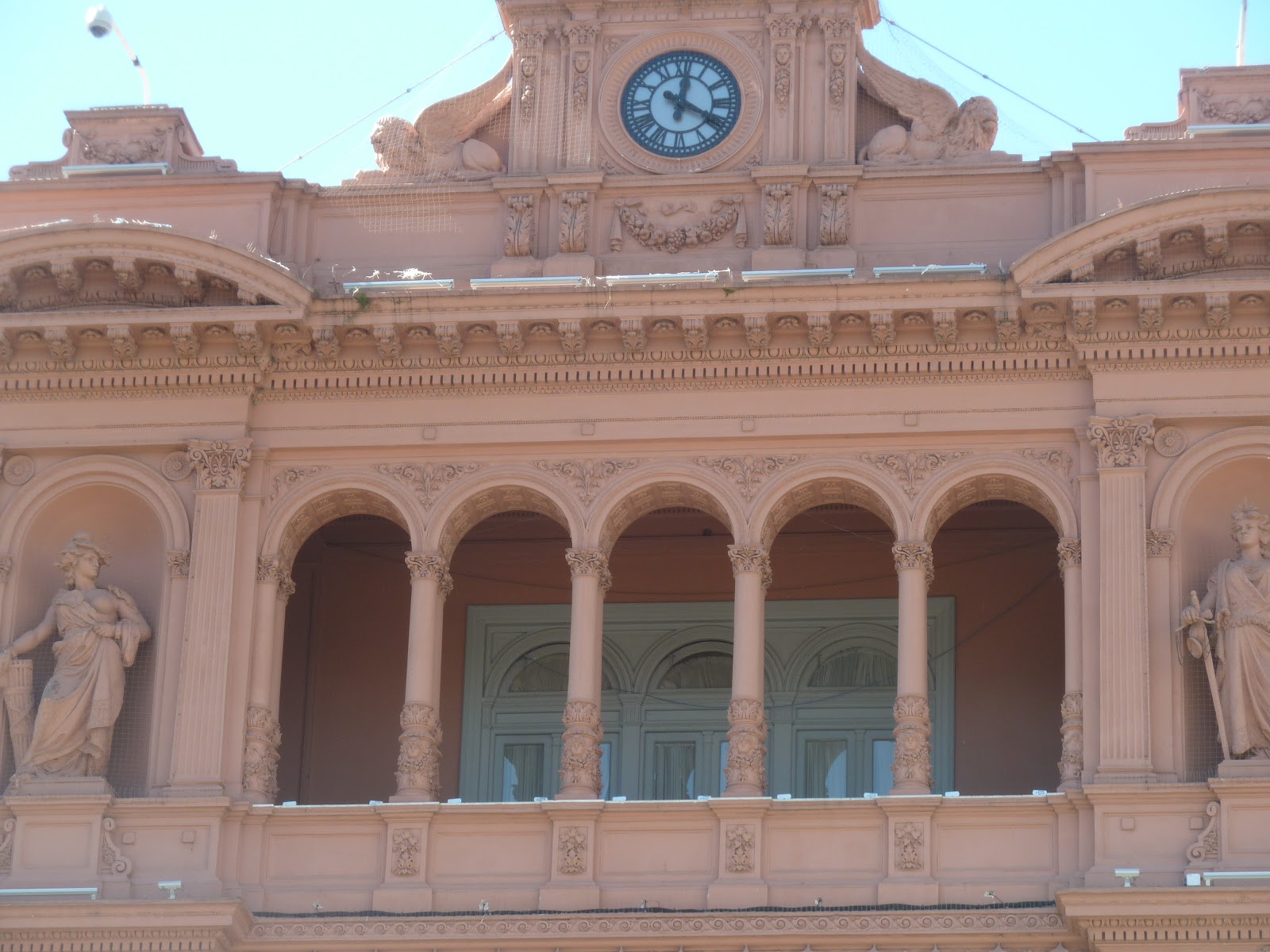The best places to see the grandeur of the city in all of its glory are in Buenos Aires' downtown. Many things are close together, and even for the ones that aren't, it's a nice walk getting there. By the way, B.A. is a walking city, so be prepared with some comfortable shoes.
Here are just a few of the national monuments or places of interest we saw.
Argentina has 23 provinces, and each is represented here at the Congreso Nacional (National Congress) by elected officials in two houses: the Senate and the Chamber of Deputies (the latter sounds kinda cool, doesn't it?).

in front of the Congreso Nacional Building
I particularly liked this shield with all of the provincial seals on the building's front gate.

Here's a close up of the seal of Santa Cruz Province where we were heading in a few days to El Calafate and the Perito Moreno Glacier.

We headed over to Plaza de Mayo, a political hot spot where Argentines have come for generations to speak their minds about a variety of issues. One of the most important protests in recent memory has been the Madres de Plaza de Mayo (Mothers of Plaza de Mayo), who weekly held vigils to demand answers about the whereabouts of their missing adult children, many of whom were political prisoners that were kidnapped, tortured and killed during Argentina's military dictatorship in power from the 1970's to early 80's.
Since it's smack dab in the middle of the Plaza, you won't miss the Piramide de Mayo.
May 25, 1810 is the date commemorating Argentina of self-rule from the Spanish government.
A statue of Senor Manuel Belgrano, one of many important Argentine founding fathers is in the Plaza, too. This statue of him is in front of the Casa Gobierno aka Casa Rosada (see below).

This sign below is regarding the Malvinas/Falkland Islands. This year is the 30th Anniversary of the conflict between Argentina and the UK over rightful ownership of this small South Atlantic island chain. It was definitely back as part of the national conversation while we were in the country.

In case you're interested in what this says, essentially it's a sign from ex-combatants of the Malvinas/Falklands War who believe that the government should bring greater public discussion about the Rattenbach Report, which attempts to explain Argentina's defeat in the Malvinas/Falklands War, and the plight of combatants. Many Argentines felt the war was an unnecessary military "intervention" propogated by the much reviled military dictatorship of that time. This part of Argentine history is pretty charged, for lack of a better word. Although that seems to be pretty commonplace. Read a little about 20th century Argentine history, and you might agree.

Historic, majestic, and political is definitely one way to describe Buenos Aires.
I like capital cities since they teach me about a country's history and politics.
Do you like visiting capital cities? Do you have a favorite capital city that you've visited? Which one?













4 comments:
Buenos Aires looks amazing. It's impressing what a good photographer can do. Amazing shots, great post.
I'm so impressed that you're wearing a skirt! I need to up my sightseeing wardrobe.
@Laura - Thanks so much! I try to do what I can with my little point and shoot.
@Erin - It was actually pretty warm while we were there. Plus, it's easy to pack a jeans skirt because it doesn't wrinkle. It's the perfect travel skirt. :)
I knew about Madres de Plaza de Mayo. Heard something about them on NPR recently and I know a little sumthin' sumthin' about Evita. Thanks for filling in some of the other gaps I have about Argentina.
Post a Comment